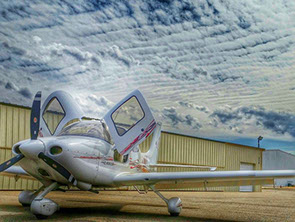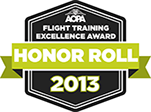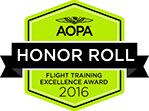Commercial Pilot Training:
Recent changes to commercial certificate requirements give us much more flexibility in training towards this certificate. The first change, was to allow for any powered airplane to be used on the commercial pilot check ride. The second change, modified the required ten hours of complex training to also allow for this to be completed in a Technically Advanced Aircraft. Because of this, any of our aircraft may be used for the check ride, and our RV12 can be utilized for the required ten hours in a complex or a technically advanced aircraft.
The minimum time requirement for commercial certificate is 250 hours, however 50 of those hours may be obtained in our iGate simulator.
Our commercial training program is customized to each student. We find that because commercial pilot applicants have such a wide-variety of flight experience, a cookie cutter approach to this training is very inefficient. We evaluate your flying skills and experience before putting together a training plan that will get you to your goal of commercial pilot efficiently, but also ensure that you are well-equipped to operate as a professional.
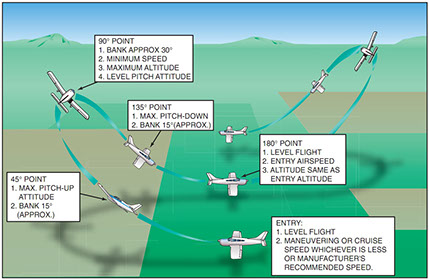
Commercial pilot experience requirements:
§61.129 Aeronautical experience.
(a) For an airplane single-engine rating. Except as provided in paragraph (i) of this section, a person who applies for a commercial pilot certificate with an airplane category and single-engine class rating must log at least 250 hours of flight time as a pilot that consists of at least:
(1) 100 hours in powered aircraft, of which 50 hours must be in airplanes.
(2) 100 hours of pilot-in-command flight time, which includes at least—
(i) 50 hours in airplanes; and
(ii) 50 hours in cross-country flight of which at least 10 hours must be in airplanes.
(3) 20 hours of training on the areas of operation listed in §61.127(b)(1) of this part that includes at least—
(i) Ten hours of instrument training using a view-limiting device including attitude instrument flying, partial panel skills, recovery from unusual flight attitudes, and intercepting and tracking navigational systems. Five hours of the 10 hours required on instrument training must be in a single engine airplane;
(ii) 10 hours of training in a complex airplane, a turbine-powered airplane, or a technically advanced airplane (TAA) that meets the requirements of paragraph (j) of this section, or any combination thereof. The airplane must be appropriate to land or sea for the rating sought;
(iii) One 2-hour cross country flight in a single engine airplane in daytime conditions that consists of a total straight-line distance of more than 100 nautical miles from the original point of departure;
(iv) One 2-hour cross country flight in a single engine airplane in nighttime conditions that consists of a total straight-line distance of more than 100 nautical miles from the original point of departure; and
(v) Three hours in a single-engine airplane with an authorized instructor in preparation for the practical test within the preceding 2 calendar months from the month of the test.
(4) Ten hours of solo flight time in a single engine airplane or 10 hours of flight time performing the duties of pilot in command in a single engine airplane with an authorized instructor on board (either of which may be credited towards the flight time requirement under paragraph (a)(2) of this section), on the areas of operation listed under §61.127(b)(1) that include—
(i) One cross-country flight of not less than 300 nautical miles total distance, with landings at a minimum of three points, one of which is a straight-line distance of at least 250 nautical miles from the original departure point. However, if this requirement is being met in Hawaii, the longest segment need only have a straight-line distance of at least 150 nautical miles; and
(ii) 5 hours in night VFR conditions with 10 takeoffs and 10 landings (with each landing involving a flight in the traffic pattern) at an airport with an operating control tower.
(b) For an airplane multiengine rating. Except as provided in paragraph (i) of this section, a person who applies for a commercial pilot certificate with an airplane category and multiengine class rating must log at least 250 hours of flight time as a pilot that consists of at least:
(1) 100 hours in powered aircraft, of which 50 hours must be in airplanes.
(2) 100 hours of pilot-in-command flight time, which includes at least—
(i) 50 hours in airplanes; and
(ii) 50 hours in cross-country flight of which at least 10 hours must be in airplanes.
(3) 20 hours of training on the areas of operation listed in §61.127(b)(2) of this part that includes at least—
(i) Ten hours of instrument training using a view-limiting device including attitude instrument flying, partial panel skills, recovery from unusual flight attitudes, and intercepting and tracking navigational systems. Five hours of the 10 hours required on instrument training must be in a multiengine airplane;
(ii) 10 hours of training in a multiengine complex or turbine-powered airplane; or for an applicant seeking a multiengine seaplane rating, 10 hours of training in a multiengine seaplane that has flaps and a controllable pitch propeller, including seaplanes equipped with an engine control system consisting of a digital computer and associated accessories for controlling the engine and propeller, such as a full authority digital engine control;
(iii) One 2-hour cross country flight in a multiengine airplane in daytime conditions that consists of a total straight-line distance of more than 100 nautical miles from the original point of departure;
(iv) One 2-hour cross country flight in a multiengine airplane in nighttime conditions that consists of a total straight-line distance of more than 100 nautical miles from the original point of departure; and
(v) Three hours in a multiengine airplane with an authorized instructor in preparation for the practical test within the preceding 2 calendar months from the month of the test.
(4) 10 hours of solo flight time in a multiengine airplane or 10 hours of flight time performing the duties of pilot in command in a multiengine airplane with an authorized instructor (either of which may be credited towards the flight time requirement in paragraph (b)(2) of this section), on the areas of operation listed in §61.127(b)(2) of this part that includes at least—
(i) One cross-country flight of not less than 300 nautical miles total distance with landings at a minimum of three points, one of which is a straight-line distance of at least 250 nautical miles from the original departure point. However, if this requirement is being met in Hawaii, the longest segment need only have a straight-line distance of at least 150 nautical miles; and
(ii) 5 hours in night VFR conditions with 10 takeoffs and 10 landings (with each landing involving a flight with a traffic pattern) at an airport with an operating control tower.
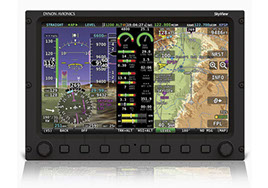
AutoGyro GmbH
Sales, Service, &
Flight Training

Independent
Repair
Maintenance
Technician

Boise Airport -3815 Rickenbacker St #203 - Boise - Idaho - 83705 - Tel: 208-869-6459 - SMS: 208-807-0582 - info@glasscockpitaviation.com
